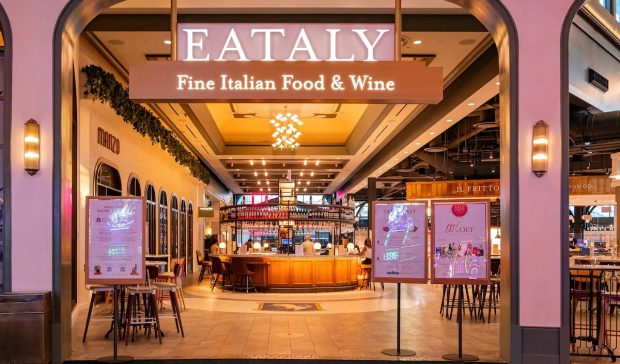Investindustrial’s Majority Stake in Eataly Tests Restaurant, Grocery Boundaries

The line between dining out and dining in is blurring as consumers increasingly expect to look to stores they shop in to meet all of their food needs — providing an ideal opportunity for businesses that offer hybrid restaurant-grocery models to pull ahead.
Noting this trend, investment firm Investindustrial announced Wednesday (Sept. 21) its acquisition of a majority stake in Eataly, which operates Italian food emporiums featuring restaurants, cafes and specialty shops in 44 locations across 15 countries.
Investindustrial bought a 200-million-euro (about $197 million) stake in the food marketplace to become the majority shareholder, with intentions to expand the concept, founded and based in Italy’s Piedmont region, into more markets. Eataly CEO Nicola Farinetti will become chairman when a new CEO is named.
“The agreement we signed launches a strategic partnership that propels Eataly into a new phase of its history, by accelerating its international growth,” Farinetti said in a statement. “This partnership will allow us to strengthen our unique format worldwide, promote innovative projects related to innovation and enhance our capabilities.”
Investindustrial’s major investment in this hybrid dining concept comes as the divisions between food categories, such as restaurant and grocery, break down. This shift was accelerated in 2020 by the emergence of the stay-at-home economy, with consumers purchasing more restaurant meals for at-home consumption than ever before and with restaurants, in an effort to stay afloat, finding opportunities to sell meal kits and groceries.
Read more: Restaurants Turn to Grocery and Meal Kits to Survive
Research from PYMNTS’ 2021 study “The Bring-It-to-Me Economy,” created in collaboration with Carat from Fiserv, which drew from a survey of over 5,200 consumers in the second quarter of the year, found that 58% of consumers were ordering restaurant-made food online more than they were before the start of the pandemic. Additionally, consumers were 31% likelier to eat their restaurant orders at home than they were to dine at a restaurant.
See more: Bring-It-to-Me Economy Ascends as Consumers Embrace Home-Centric Lifestyles
On top of this shift toward consuming restaurant food at home, consumers have also been expecting more restaurant-like options from their grocery stores. Having grown used to the convenience of takeout, grocery shoppers increasingly opt for ready-to-go meals, and with the rapid food inflation of the recent past, they have been especially interested in more affordable alternatives to restaurant ordering. Consequently, grocers have been boosting their prepared food offerings.
Kroger, the leading pure-play grocer in the United States., for one, has seen strength in its Home Chef meal solution business, which offers both meal kits and “oven-ready” heat-and-eat meals. Noting the strength of this business, the company announced in July a new production center in Douglasville, Georgia, to increase capacity and boost efficiency.
Read more: Kroger Boosts ‘Home Chef’ Meal Prep as Restaurant Take out, Delivery Slump
Research from PYMNTS’ August study “Digital Economy Payments: Consumers Buy Into Food Bargains,” which drew from a July survey of nearly 2,700 U.S. consumers, found that 37% of consumers bought prepared food on their most recent grocery trip, up 7 points from the 30% of consumers who had done so back in November 2021.
See more: Consumers Increasingly Expect Prepared Meals at the Grocery Store
